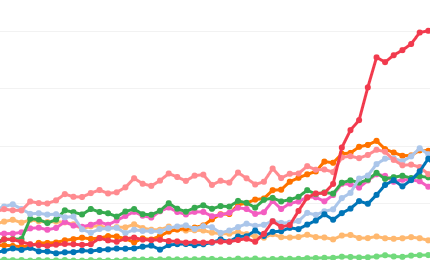Fentanyl is responsible for a disproportionate number of drug overdose deaths. The only way to curtail the growing crisis is through demand-side interventions.
A New Push for Harm Reduction
On March 29, 2023, the Food and Drug Administration approved Narcan for over-the-counter use. Narcan, a naloxone nasal spray designed to reverse opioid overdoses, is now available in stores across the country — an unprecedented expansion of access.
Deregulating Narcan is one of several new approaches lawmakers are taking in the drug war. Long-held stigma towards harm reduction has crumbled against the unprecedented lethality of fentanyl. The synthetic opioid, 50 times as potent as heroin, began to appear in autopsy reports around 2014. According to mortality data taken from the Centers for Disease Control and Prevention (CDC), by 2021, fentanyl was present in over 70 thousand of the 109 thousand fatal drug and alcohol-related overdoses. Not only has fentanyl transformed existing heroin markets — it has also spread to communities of stimulant users. Fentanyl appeared as a contributing factor in 58% of methamphetamine and 74% of cocaine-related deaths in 2021. Cocaine overdoses are 7 times as common as they were a decade ago, but only when including incidents involving fentanyl.
Lessons from the War on Drugs
Traditional supply-side drug enforcement has struggled to contain fentanyl. The highly concentrated product is harder to intercept at the southern border than black-tar heroin. Recent attention has focused on efforts to curb the shipment of fentanyl precursors from China to Mexico, but researchers at Yale University argue efforts to restrict the supply of sought-after drugs simply fuels the race to develop more concentrated and more lethal products. Regulation of the meth-precursor pseudoephedrine in 2006 Title VII led to innovations in the manufacturing of P2P meth that ultimately expanded the availability of the product. Multi-state crackdowns on pill mills in 2012 pushed patients addicted to Oxycontin into heroin markets. A focus on heroin interdiction has in turn likely encouraged suppliers to switch to fentanyl, leading to an unprecedented increase in overdose deaths.
Where We Still Fall Short
Harm reduction and rehabilitation approaches have been gaining traction. In addition to the deregulation of Narcan, the DEA is maintaining some pandemic-era telehealth prescription allowances for buprenorphine (a withdrawal management drug similar to methadone). That said, there are numerous tactics still being underutilized: methadone, the cheaper alternative to buprenorphine, remains bound by in-person consumption restrictions; fentanyl test strips remain illegal in over a dozen states despite being shown to elicit precautions in drug use behavior. West Virginia, an early trial state for Oxycontin and a perennial overdose capital, only recently stopped classifying fentanyl test strips as drug paraphernalia in 2022 HB 4373.
A Path Forward
To counteract the unprecedented rise in overdose deaths the entire kit of harm reduction strategies should be employed. A focus on enforcement has driven adaptations in the drug supply chain that have increased the lethality of the product. By pivoting to demand-side harm reduction, prevention, and rehabilitation, there is still a chance to curb the escalating crisis of overdose deaths.
Aaron Till
Aaron grew up in St. Louis, Missouri, but moved to Portland, Oregon for undergrad where he studied
Biology at Reed College. After graduating Aaron made a hard pivot to finance and spent four years
as a data analyst at a New York equity research firm. He is interested in the field of translational
research, taking academic research and extracting policy insights. Telling stories with data is
the first step of that process, which is what he loves about being an editor on the GPPR data
visualization team.
